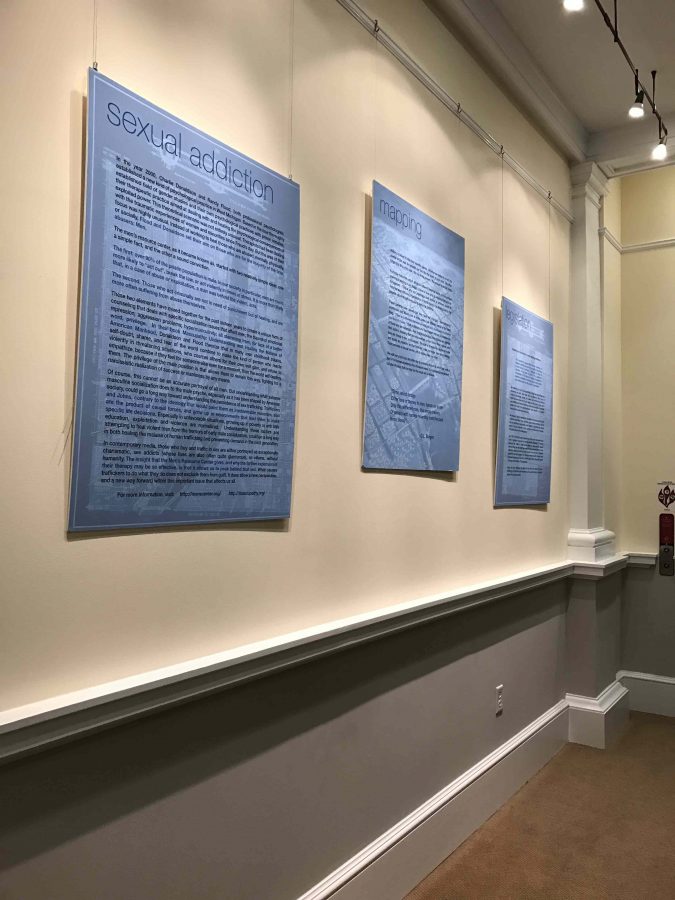New art exhibit raises human trafficking awareness nationwide
W&L professor portrays the stories of survivors of human trafficking through art
February 8, 2017
In a new social justice campaign, human trafficking survivors are taking their stories from the streets of Michigan to Washington and Lee University.
In an exhibit in Holekamp Hall, Assistant Professor of Theater Stephanie Sandberg is visually portraying the stories of six survivors she interviewed over the course of a year. The exhibit debuted on Jan. 26 and includes reflections from the survivors about their life in captivity.
Entitled “Stories in Blue: A Pilgrimage to Heal Human Trafficking,” the project is a combination of live performance, still photography and films. The live performances were held daily in Michigan and featured actors in place of the survivors.
“The origins of the piece came about a couple years ago,” Sandberg said. “When I’m asked to write a piece, I do a study of some social issue then take the material and turn it into a performance.”
Sandberg interviewed 47 survivors of human trafficking to gain insight into their lives and experiences. Compared to her other pieces, the number of interviews she conducted was lower—likely because very few survivors are inclined to tell their harrowing stories.
“The death rate unfortunately is very high,” Sandberg said. “Very few are rescued and want to talk. I went through trauma training for the interviews to make sure they didn’t feel as though I was using and abusing their stories.”
When Sandberg felt she had compiled enough information from her interviews, she chose six representative stories and began work on the artistic components. She selected historic trafficking sites in Michigan for the live performances and directed the actors to make a pilgrimage through those downtown areas.
Sandberg originally chose Michigan as the site of her performance after having lived in the area and learned of the rate of trafficking in the state—the second highest in the nation.
Though the project was centered out of state, Sandberg said the stories were also relevant to Virginia—with Lexington in particular serving as a hub for trafficking.
“The truck stop down the road is definitely a site for trafficking,” she said. “Trafficking is a major problem in Virginia, and we were the last state to pass legislation on it.”
Despite all states now criminalizing trafficking, prosecution of the crime remains difficult considering few survivors are willing to testify. The issue is compounded by the fact that many of the survivors have previous criminal charges, allowing the prosecution to more easily refute their stories.
Cat Spencer, ‘20, worked with Sandberg on her research.
“Virginia is one of the worst states as far as trafficking,” Spencer said. “I’ve been looking into legislation on it, but it’s really a matter of waiting to get more information.”
For now, Sandberg insists that the Nordic model is the best way to combat trafficking nationwide. The process would involve sting operations to identify traffickers, who would then face major fines and have their vehicles impounded. After receiving that money, officials would reinvest the funds into additional programs to continue the operations.
“The root of trafficking really stems from three issues: poverty, greed and addiction,” Sandberg said. “I think the best way to combat it is not to prosecute the traffickers, but to use fines that will be implemented in future sting operations to find others involved.”



